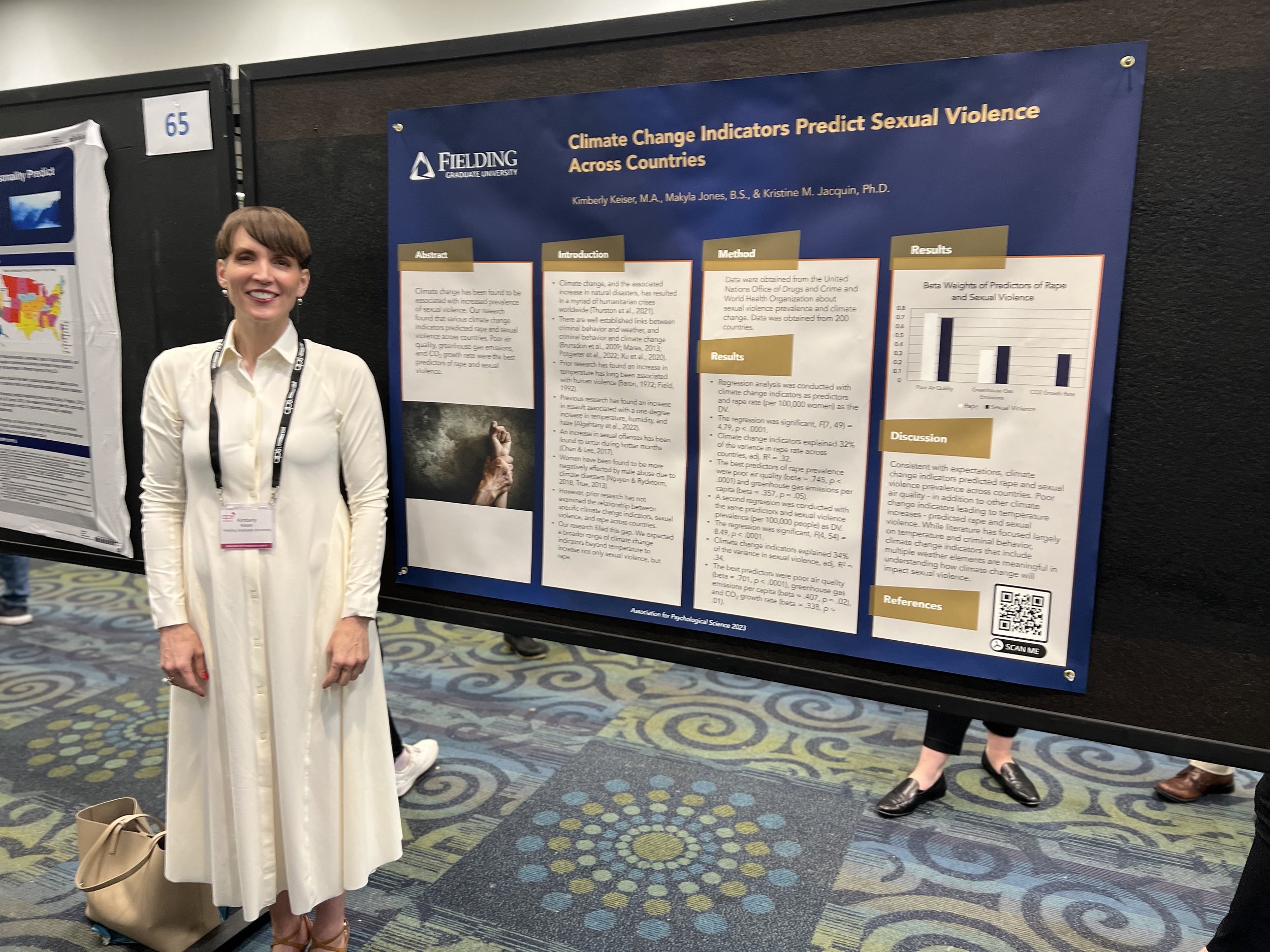Climate Change Indicators Predict Sexual Violence Across Countries
Recently, Kimberly presented a poster at the Association for Psychological Science (APS) conference in Washington, DC, on the worldwide impacts of climate change on rape and sexual violence.
Research has shown climate change to be associated with an increased prevalence of sexual violence. Data from the United Nations Office of Drugs and Crime and the World Health Organization from 200 countries displayed trends between rape and sexual violence prevalence and climate change.
Climate change and the associated increase in natural disasters have resulted in many humanitarian crises worldwide. There are well-established links between criminal behavior and the weather, and criminal behavior and climate change.
Additional research has found an increase in temperature has long been associated with human violence, and an increase in sexual offenses has been found to occur during hotter months. An increase in assault is associated with a one-degree increase in temperature, humidity, and haze.
It has also been found women tend to be more negatively affected by male abuse due to climate disasters.
However, prior research has not examined the relationship between specific climate change indicators, sexual violence, and rape. Kimberly’s research filled this gap.
It was hypothesized that a broader range of climate change indicators beyond temperature increase not only sexual violence but rape.
Rape in this context was defined as rape against females. Sexual violence in this context was described as being perpetrated against males or females. The research showed climate change indicators explained 32% of the variance in rape rates across countries. The best predictors of rape prevalence were poor air quality and greenhouse gas emissions.
This research also showed that climate change indicators explained 34% of the variance in sexual violence. The best predictors were:
Poor air quality
Greenhouse gas emissions
CO2 growth rate
Consistent with expectations, climate change indicators predicted rape and sexual violence prevalence across countries. Poor air quality — in addition to other climate change indicators leading to temperature increases — predicted rape and sexual violence.
Ultimately, while literature has focused mainly on temperature and criminal behavior, climate change indicators that include multiple weather elements are meaningful in understanding how climate change can and will impact rates of sexual violence.
Interested in Learning More?
Kimberly Keiser & Associates offers mental health services and education focused on sex therapy, trauma therapy and individual or group counseling. Learn from our team of experienced and credentialed providers.


